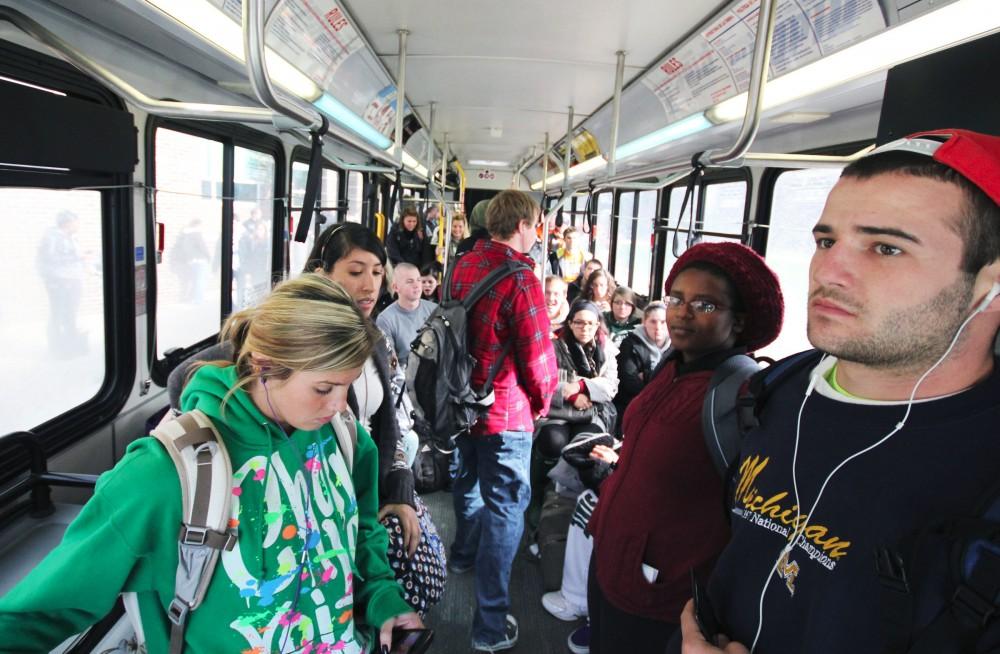Bus ridership continues to decrease despite student complaints of overcrowding

GVL / Robert Mathews Attempts have been made by The Rapid to decrease overcrowding on buses. Mainly the challenge has been seen as a failure by the students.
Oct 27, 2011
Although students continue to report the problem of overcrowding on buses, updated bus ridership records at Grand Valley State University indicate there is no problem at all.
“We consistently monitor the ridership counts, and as demand increases we provide additional buses to alleviate potential congestion,” said Mark Rambo, operations manager for Pew Campus Operations. “We evaluate each concern and adapt our system to best accommodate our ridership.”
Pew Campus Operations, which coordinates with The Rapid on behalf of GVSU, has recorded a decreasing trend in ridership in the past few weeks. While ridership rose from weeks three to five since the fall semester began, numbers fell steadily during weeks five through seven.
Week seven saw a 10,000-strong rider decrease from week five, during which 106,345 people rode the buses.
The first week of school was the busiest of the year, though, with 109,786 students using public transit. However, the disparity in ridership from week to week is not nearly as drastic as the difference from year to year.
Although some students have complained that the buses are far more crowded this year than in years past, the ridership logs show otherwise. During the first seven weeks of the 2010-2011 school year, 702,201 people rode the buses as opposed to the 689,332 students this year. The large decline in ridership disrupts a steadily increasing trend seen since Fall 2007.
Bus ridership is recorded by the Rapid drivers, who click a button each time a student gets on board transit routes 50, 51, 37 and 48.
Philip Batty of GVSU Institutional Analysis said the process for recording ridership is about as accurate as the Rapid can manage without slowing the system or being too invasive.
Batty said the method does not measure the number of individuals that use the bus system each day, but the number of times the bus is ridden. Therefore, students who use the bus multiple times are counted for each ride. Because the records only concern bus traffic each day, the recount of students does not hinder the calculations.
Rambo said Pew Campus Operations is making slight changes to the bus schedule to accommodate everyone, but no bus has been added since the issue was last pursued earlier this semester.
“We have adjusted the 50 schedule to accommodate additional runs after midnight to allow our late working students the opportunity to take the bus,” he said.
Operation of Route 50 after midnight and a temporary change in bus stops due to construction at Campus West have been the main concerns addressed by Pew Operations this year, Rambo said.
While the addition of more buses has not been a question this fall, Rambo said the university has contracted new buses to its system every year since 2000.
For more information on ridership numbers or bus schedules, visit www.gvsu.edu/bus.






















